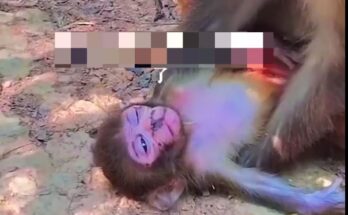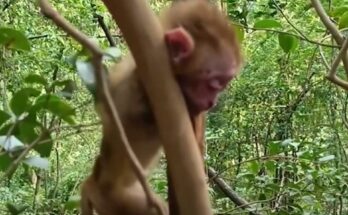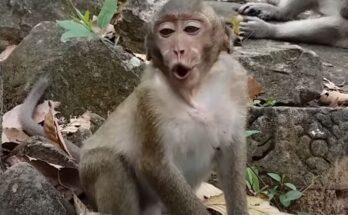The journey of a baby monkey after being weaned by its mother is a fascinating and transformative chapter in its life. Weaning marks the gradual transition from maternal dependence to independence, and the best actions observed during this period reflect resilience, adaptability, and a desire to thrive within its social group.
Weaning is a natural process in a monkey’s development, usually occurring between six months to two years of age, depending on the species. It represents the end of breastfeeding and signals the beginning of a phase where the young monkey learns to find and consume solid food. During this time, the baby monkey’s actions become increasingly independent, demonstrating a strong sense of curiosity and initiative.
One of the most striking actions of a baby monkey during this period is its eagerness to explore its environment. This exploration is vital for survival, as it helps the young monkey identify safe food sources, potential predators, and safe paths through its habitat. For example, in forest-dwelling species, the baby monkey starts climbing trees, jumping between branches, and even practicing how to use tools, if its species is known for such behavior. These actions not only improve its physical strength and agility but also teach it critical survival skills.
Another significant behavior is social engagement. Baby monkeys rely heavily on their social group to learn the ropes of their community and hierarchy. After being weaned, they begin to spend more time interacting with other members of the group, including peers and older individuals. These interactions often involve playing, mimicking adult behavior, and testing boundaries. Through play, they develop motor skills and build bonds that can later provide protection and support within the troop.
Mimicking is another remarkable behavior observed in baby monkeys post-weaning. Young monkeys watch their mothers and other adults intently, learning essential life skills such as food selection, grooming, and group communication. This imitation ensures that they acquire the knowledge necessary for survival. For instance, in species like capuchin monkeys, young ones may observe adults cracking nuts with rocks or using sticks to fish for insects, skills they gradually try to replicate themselves.
The transition to solid food is another significant milestone. Baby monkeys initially rely on their mothers for guidance on what to eat. After weaning, they begin experimenting with different food items under the watchful eyes of their group. They learn to forage efficiently, identify nutritious plants, and avoid toxic substances. This stage of dietary experimentation is critical in shaping their future eating habits and overall health.
Lastly, one of the most heartwarming actions of a baby monkey during this period is its persistence in seeking occasional reassurance from its mother. Even after weaning, the bond between a baby monkey and its mother remains strong. While the physical dependence has reduced, emotional connections persist, and the baby monkey often seeks comfort in her presence during challenging moments.
In conclusion, the best actions of a baby monkey after being weaned by its mother highlight its adaptability, curiosity, and growing independence. This period is a crucial phase in its development, laying the foundation for a successful transition to adulthood. From exploring its surroundings to learning vital life skills, the baby monkey’s journey is a testament to its resilience and the complex dynamics of the animal kingdom.


